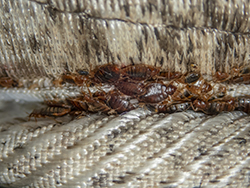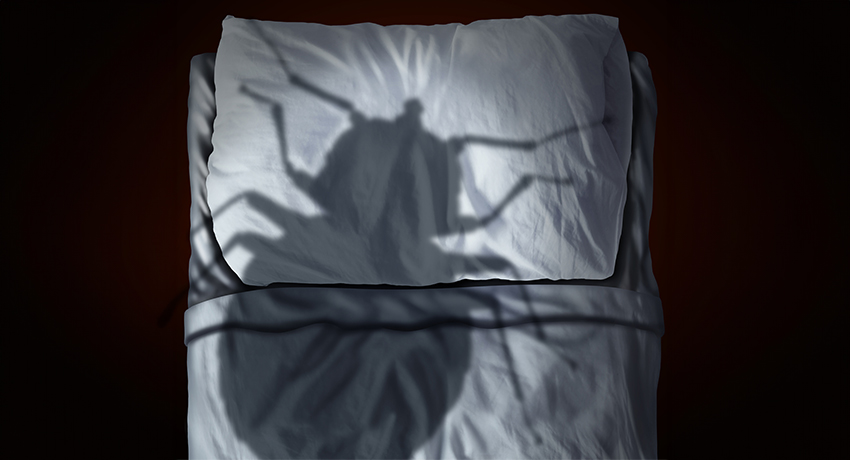One of my childhood memories is being tucked into bed with the endearing phrase, “Sleep tight, don’t let the bed bugs bite.” If I had seen a photo of a bed bug at that age, it would have caused nightmares!

The global trend of increasing bed bug infestations is widespread and rising in Houston, as well, according to Luis Z. Ostrosky, MD, infectious disease expert at UT Physicians. Bed bugs are common insects associated with human habitats, such as houses, offices, movie theaters, hotels, and retail stores. They feed on blood and reproduce rapidly.
“These pests can hide in various nooks and crannies, making them difficult to detect until a significant infestation occurs,” said Ostrosky, professor and vice chair for health care quality at McGovern Medical School at UTHealth Houston. “Bed bugs do not transmit diseases, like some insects. Their bites can cause contact dermatitis (an allergic reaction), but they are not dangerous to humans.”
Government agencies, such as the Environmental Protection Agency and Centers for Disease Control and Prevention, consider bed bugs a public health pest. They correlate the recent increase in bed bugs in the United States to a lack of knowledge about infestation prevention, greater travel, and higher resistance of bed bugs to pesticides.
What to look for
The first sign of a bed bug infestation is often the appearance of reddish skin lesions when waking in the morning. These bites can be itchy and visible, even though the bed bugs may not be easily seen.
“Investigating further can potentially reveal a massive infestation,” Ostrosky said. “There’s definitely an ‘ick’ factor, but they’re not truly dangerous to human health.”
Messaging to parents regarding bed bugs

Ostrosky shared several tips to guide parents around bed bugs:
Don’t panic
While bed bugs are bothersome and difficult to eliminate, Ostrosky said parents do not need to panic. He strongly recommends addressing them, however, because they will become a massive infestation if ignored. Look for bed bugs in the seams of mattresses, sofas, or furniture.
Work with pest professionals
Bed bugs require professional equipment and treatment. They will steam your furniture, clothes, and everything in the house. Heat is what kills them versus insecticides.
“Don’t delay calling professionals to get rid of them,” Ostrosky said. “It’s not something you can do on your own.”
Check for bed bugs during and after travel
Ostrosky recommends doing a quick bed bug check after checking into a hotel room because that’s where they are highly prevalent. Put your luggage in the bathtub during the quick inspection. Untuck the sheets in the mattress and look in the seams for any red or black spots. Vacate the room immediately if any are seen.
After traveling, Ostrosky recommends leaving your bag unpacked in the hot garage for a few days. If that’s not possible, bring in your clothes and unpack in your laundry room. Put the clothes in the dryer for a heat cycle, then wash and dry.
Did you know?
What’s a fun fact about bed bugs? Ostrosky said the best way to detect bed bugs is with dogs.
“The big companies that handle bed bug infestations usually have trained dogs that come in, smell, and locate them,” Ostrosky said.


